Supplementary Information Appendix 1: Additional survey method
advertisement
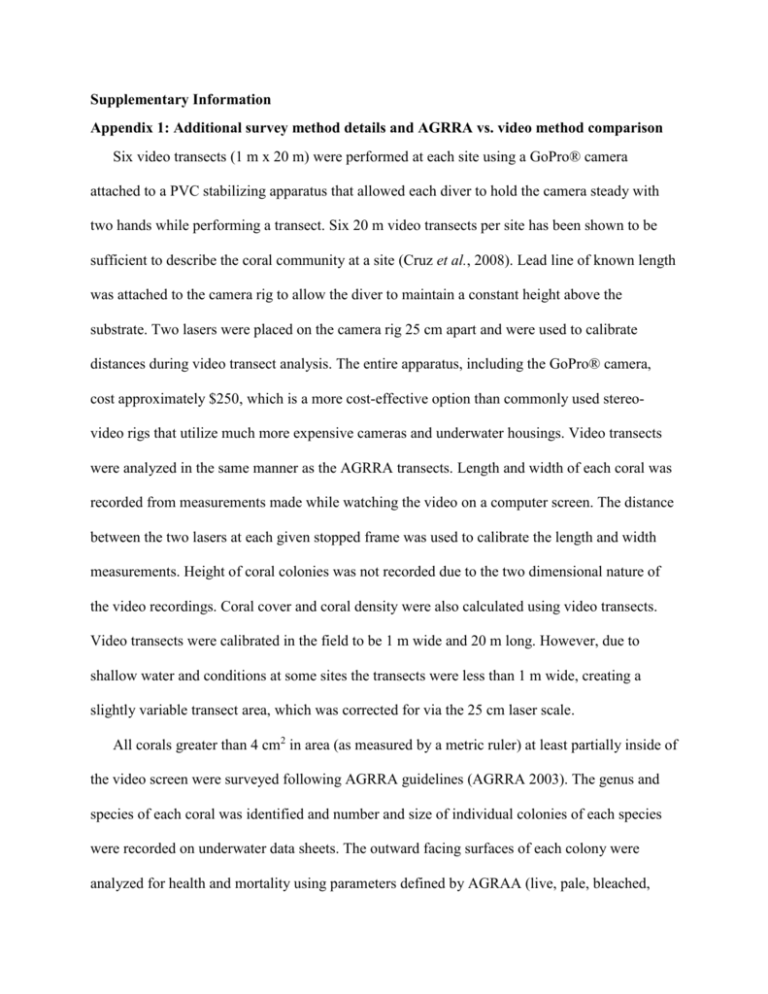
Supplementary Information Appendix 1: Additional survey method details and AGRRA vs. video method comparison Six video transects (1 m x 20 m) were performed at each site using a GoPro® camera attached to a PVC stabilizing apparatus that allowed each diver to hold the camera steady with two hands while performing a transect. Six 20 m video transects per site has been shown to be sufficient to describe the coral community at a site (Cruz et al., 2008). Lead line of known length was attached to the camera rig to allow the diver to maintain a constant height above the substrate. Two lasers were placed on the camera rig 25 cm apart and were used to calibrate distances during video transect analysis. The entire apparatus, including the GoPro® camera, cost approximately $250, which is a more cost-effective option than commonly used stereovideo rigs that utilize much more expensive cameras and underwater housings. Video transects were analyzed in the same manner as the AGRRA transects. Length and width of each coral was recorded from measurements made while watching the video on a computer screen. The distance between the two lasers at each given stopped frame was used to calibrate the length and width measurements. Height of coral colonies was not recorded due to the two dimensional nature of the video recordings. Coral cover and coral density were also calculated using video transects. Video transects were calibrated in the field to be 1 m wide and 20 m long. However, due to shallow water and conditions at some sites the transects were less than 1 m wide, creating a slightly variable transect area, which was corrected for via the 25 cm laser scale. All corals greater than 4 cm2 in area (as measured by a metric ruler) at least partially inside of the video screen were surveyed following AGRRA guidelines (AGRRA 2003). The genus and species of each coral was identified and number and size of individual colonies of each species were recorded on underwater data sheets. The outward facing surfaces of each colony were analyzed for health and mortality using parameters defined by AGRAA (live, pale, bleached, new mortality, old mortality). After the data were collected, species diversity, abundance, species richness, and coral life history (Darling et al., 2012) were calculated for each site. The results of the two survey methods were analyzed separately and then compared. It was determined that the data from the two transect methods could be combined for species richness, abundance, and Shannon diversity, as survey method was not a significant factor in the ANOVA (Table 3A). Percent coral cover was calculated using video transect data only, as the AGRRA method over-estimates coral cover. This is due to the fact that the AGRRA methodology requires any coral that is even partially within the transect to be quantified in full, leading to overestimates of coral cover. Coral density (# of corals/ m2) was also calculated from video transect data only. Each method has downsides. AGRRA surveys are time consuming (1 hour per transect) and have the potential to overestimate coral cover. In addition, the diver must identify every coral individually while also maintaining buoyancy and safe diving practices, which can be difficult especially in rough weather. With video analysis, transects can be recorded much faster (less than 1 hour for 3 surveys) with approximately 150% of the AGRRA survey area covered using video in significantly less dive time. Videos were analyzed after the fact, allowing several researchers to analyze the video together and make a more thorough identification of coral species than underwater AGRRA surveys allow for. While limitations in video framing and the two dimensional nature of the video prevent accurate measurements of individual size, coral cover can also be estimated more accurately than with AGRRA methodology. Overall, video analysis requires more time than field transects, but has the potential to be more accurate as the time crunch or other external stressors that may be experienced underwater are no longer present. The two methods are comparable in terms of results, however video surveys are more efficient in the field and are have previously been shown to have the potential to be more accurate (Lirman et al., 2007; Turner et al., 2015). References Cruz, I., Kikuchi, R.K. & Leão, Z.M. (2008) Use of the video transect method for characterizing the Itacolomis reefs, eastern Brazil. Brazilian Journal of Oceanography, 56, 271-280. Darling, E.S., Alvarez‐Filip, L., Oliver, T.A., McClanahan, T.R. & Côté, I.M. (2012) Evaluating life‐history strategies of reef corals from species traits. Ecology Letters, 15, 1378-1386. Lirman, D., Gracias, N., Gintert, B., Gleason, A., Reid, R., Negahdaripour, S. & Kramer, P. (2007) Development and application of a video-mosaic survey technology to document the status of coral reef communities. Environmental monitoring and assessment, 125, 59-73. Turner, J.A., Polunin, N.V., Field, S.N. & Wilson, S.K. (2015) Measuring coral size-frequency distribution using stereo video technology, a comparison with in situ measurements. Environmental monitoring and assessment, 187, 1-10. Appendix 2: Nutrient sample processing and instrumentation details Fine-scale nutrient dynamics at the site scale were quantified from dissolved inorganic nitrogen [(DIN) = nitrate plus nitrite (NOx) and ammonium (NH4)] and dissolved organic carbon (DOC). NOx measurements utilized the Spectrophotometric Elemental Analysis System (SEASII) (Adornato et al., 2005; Adornato et al., 2007). Specifications for NOx measurements using SEASII or dual channel Mini-SEAS (M-SEAS) instruments included a 5-10 nM limit of detection with linear ranges of 1 to 500 nM or 100 to 5000 nM (see Adornato et al., 2005) using a 15 cm liquid core waveguide. DOC measurements were conducted via the conventional combustion catalytic oxidation method using a Shimadzu© TOC-L series analyzer (4 µg/L detection limit). Dissolved ammonium in water samples was measured in the laboratory by fluorescence following the method of (Holmes et al., 1999). Briefly, 3 ml of o-phthalaldehyde working reagent was added to a 12 ml sample in acid-washed and DI-rinsed 15 ml centrifuge tubes. After a two hour dark room temperature incubation, samples were analyzed with a Turner Designs fluorometer fitted with an ammonium optical kit. The lower limit of detection is between 100 and 200 nM. References Adornato, L., Kaltenbacher, E., Villareal, T. & Byrne, R. (2005) Continuous in situ determinations of nitrite at nanomolar concentrations. Deep Sea Research Part I: Oceanographic Research Papers, 52, 543-551. Adornato, L.R., Kaltenbacher, E.A., Greenhow, D.R. & Byrne, R.H. (2007) High-resolution in situ analysis of nitrate and phosphate in the oligotrophic ocean. Environmental science & technology, 41, 4045-4052. Holmes, R.M., Aminot, A., Kérouel, R., Hooker, B.A. & Peterson, B.J. (1999) A simple and precise method for measuring ammonium in marine and freshwater ecosystems. Canadian Journal of Fisheries and Aquatic Sciences, 56, 1801-1808. Table S1: Pair-wise comparisons of effects of Site on Species Richness, Abundance, Shannon Diversity, Percent Coral Cover, and Coral Density Community Parameter Site Variable Species Richness Site Abundance Site Shannon Diversity Index Site Comparison 3-1 9-1 4-2 7-2 8-2 11-2 4-3 7-3 8-3 11-3 13-3 6-4 9-4 12-4 14-4 7-5 9-5 7-6 8-6 11-6 9-7 12-7 14-7 9-8 12-8 14-8 11-9 13-9 12-11 14-11 4-3 9-4 2-1 3-1 9-1 4-2 7-2 8-2 11-2 13-2 4-3 5-3 7-3 8-3 p-value 0.003 0.005 0.02 0.0008 0.01 0.002 0.003 0.0002 0.002 0.0004 0.01 0.04 0.0006 0.04 0.03 0.02 0.03 0.002 0.03 0.005 <0.0001 0.002 0.001 0.0004 0.03 0.02 <0.0001 0.002 0.005 0.003 0.01 0.02 0.03 0.006 0.0003 0.01 0.02 0.01 0.03 0.03 0.002 0.06 0.003 0.002 Percent Coral Cover Site Coral Density Site 11-3 13-3 6-4 9-4 9-5 9-6 9-7 9-8 11-9 12-9 13-9 14-9 4-1 7-1 8-1 7-2 4-3 7-3 8-3 6-4 9-4 13-4 14-4 7-5 8-5 7-6 8-6 9-7 12-7 13-7 14-7 9-8 11-8 12-8 13-8 14-8 11-9 14-11 3-1 4-1 7-1 8-1 9-1 11-1 3-2 0.005 0.006 0.07 0.0001 0.0021 0.04 0.0001 0.0001 0.0002 0.03 0.0003 0.005 0.01 <0.0001 <0.0001 0.006 0.001 <0.0001 <0.0001 0.004 0.001 0.005 0.0002 0.0001 <0.0001 <0.0001 <0.0001 <0.0001 <0.0001 <0.0001 <0.0001 <0.0001 0.002 <0.0001 <0.0001 <0.0001 0.04 0.01 0.0003 <0.0001 0.02 0.09 0.02 0.005 <0.0001 4-2 9-2 4-3 5-3 7-3 8-3 11-3 13-3 14-3 5-4 6-4 9-4 12-4 13-4 14-4 7-5 11-5 7-6 8-6 11-6 13-6 9-7 12-7 14-7 9-8 12-8 14-8 11-9 13-9 12-11 14-11 13-12 0.0001 0.0003 <0.0001 0.002 <0.0001 <0.0001 <0.0001 <0.0001 0.002 <0.0001 <0.0001 <0.0001 <0.0001 0.02 <0.0001 0.003 0.0004 <0.0001 0.0001 <0.0001 0.005 <0.0001 0.0001 0.003 <0.0001 0.0007 0.01 <0.0001 <0.0001 <0.0001 0.0004 0.02 Table S1: Results of Tukey’s HSD tests evaluating the significance of the pair-wise comparisons of sites that had a significant effect on species richness, abundance, Shannon diversity index, percent coral cover, or coral density. Only significant pairwise comparisons (p<0.05) are included. Table S2: Effects of Site and Site Type on DIN, DON, Total N, DOC, and C:N Nutrient Parameter Site Variable df Sum sq Mean sq F value p-value DIN DON Total N DOC C:N Site Type Site Type Site Type Site Type Site Type 12 2 12 2 12 2 12 2 12 2 11.42 2.559 66179 4168 470282 36117 1037581 130514 4518 412 0.952 1.279 5515 2084 39190 18059 86465 65257 376.5 206.1 6.431 5.84 9.019 1.814 65.55 14.79 17.64 10.61 2.424 1.157 <0.0001 0.00395 <0.0001 0.168 <0.0001 <0.0001 <0.0001 <0.0001 0.00824 0.318 Table S2: Results of three-way analysis of variance (ANOVA) of the effect of site variables on nutrient parameters. Significant effects are in bold (p<0.05). df= degrees of freedom. Table S3: Pair-Wise comparisons of effects of Site Type on DIN, DON, Total N, DOC, and C:N. Nutrient Parameter DIN Total N Factor Type Type DOC Type Comparison lowTP-modTP lowTP-extTP modTP-extTP lowTP-extTP modTP-extTP p-value 0.003 0.0004 <0.0001 0.004 <0.0001 Table S3: Results of Tukey’s HSD tests evaluating the significance of the pair-wise comparisons of factors that had a significant effect on nutrient parameters. Only significant pairwise comparisons (p<0.05) are included. Table S4: Pair-wise comparisons of effects of Site on DIN, DON, Total N, DOC, and C:N Nutrient Parameter Site Variable Comparison p-value DIN Site DON Site Total N Site 2-1 5-1 8-1 13-1 4-2 6-2 9-2 11-2 12-2 14-2 4-3 5-4 8-4 13-4 9-5 11-5 12-5 12-8 13-12 3-1 4-1 5-3 6-3 7-3 9-3 11-3 12-3 13-3 14-3 5-4 6-4 7-4 9-4 11-4 12-4 13-4 14-4 2-1 3-1 4-1 3-2 4-2 5-2 6-2 7-2 0.001 0.003 0.05 0.04 0.0001 0.03 0.02 0.01 0.0005 0.05 0.02 0.0002 0.01 0.003 0.04 0.03 0.001 0.04 0.02 <0.0001 0.0002 <0.0001 <0.0001 0.002 <0.0001 <0.0001 <0.0001 <0.0001 <0.0001 0.0001 0.0005 0.03 0.0003 0.0006 0.0002 0.0002 0.0003 <0.0001 <0.0001 <0.0001 <0.0001 <0.0001 <0.0001 <0.0001 <0.0001 DOC Site 8-2 9-2 11-2 12-2 13-2 14-2 5-3 6-3 7-3 8-3 9-3 11-3 12-3 13-3 14-3 6-1 11-1 13-1 6-2 7-2 8-2 9-2 11-2 12-2 13-2 14-2 6-3 7-3 9-3 11-3 13-3 6-4 7-4 11-4 13-4 6-5 7-5 11-5 13-5 8-6 9-6 11-6 12-6 13-6 14-6 0.0007 <0.0001 <0.0001 <0.0001 <0.0001 <0.0001 <0.0001 <0.0001 <0.0001 <0.0001 <0.0001 <0.0001 <0.0001 <0.0001 <0.0001 <0.0001 0.0004 0.02 <0.0001 <0.0001 0.009 <0.0001 <0.0001 0.0002 <0.0001 0.005 <0.0001 0.0001 0.01 <0.0001 0.001 <0.0001 0.002 0.001 0.04 <0.0001 0.002 0.0005 0.02 0.004 <0.0001 0.0005 <0.0001 <0.0001 <0.0001 C:N Site 5-3 6-3 12-3 13-3 0.04 0.003 0.04 0.02 Table S4: Results of Tukey’s HSD tests evaluating the significance of the pair-wise comparisons of sites that had a significant effect on nutrient parameters. Only significant pairwise comparisons (p<0.05) are included. Table S5: Best AIC for Linear Mixed Effects Modeling of Ecological Parameters vs. Temperature and Nutrient Parameters across Site Types Stressor Avg Annual Random 710.0903 Max Temp Intercepts 1328.830 AIC for Shannon Diversity 107.5465 710.1087 1328.855 107.5500 524.7008 494.2026 714.0903 1328.830 N/A 528.6762 498.1820 706.3120 1326.932 104.3242 524.1923 491.6645 706.9136 1327.564 104.3687 524.8521 492.3827 710.3120 1330.932 108.3238 528.1923 495.6645 703.0171 1323.695* 101.0127* 522.6420 488.2059 704.6560 1326.724 101.0689 524.8152 491.0418 707.0171 N/A 105.0009 N/A N/A 702.0496* 1324.152 104.6144 519.8541 486.6901* 702.8012 1325.373 104.0936 521.6396 487.7144 706.0496 1328.152 108.0936 N/A 495.6645 712.6130 1331.366 112.5794 519.6016* 495.3170 722.0087 1343.542 114.3407 631.6420 507.8714 N/A 1335.357 N/A N/A N/A Avg Annual Range # Days above Bleaching Threshold /Year # Consecutive Days above Bleaching Threshold/ Year Chl a Model Model Random Slopes Model Random Slopes and Intercepts Model Random Intercepts Model Random Slopes Model Random Slopes and Intercepts Model Random Intercepts Model Random Slopes Model Random Slopes and Intercepts Model Random Intercepts Model Random Slopes Model Random Slopes and Intercepts Model Random Intercepts Model Random Slopes Model Random Slopes AIC for Richness AIC for Abundance AIC for Coral Cover 524.6762 AIC for Coral Density 494.1820 and Intercepts Model Table S5: Summary of linear mixed effects modeling and Best AIC procedure used to compare the effects of temperature parameters on measured ecological parameters across all site types. Best AIC values for each temperature parameter vs. ecological parameter comparison are in bold. An asterisk marks the comparison that yielded the overall best AIC for each ecological parameter. N/A indicates AIC procedures that produced an error. Table S6: p-values and R2 for Best AIC Model of Ecological Parameters vs. Temperature and Nutrient Parameters across Site Types Species Richness # Consec. Days above Bleaching Threshold/ Year Abundance Shannon Percent Diversity Coral Cover # Days above # Days above Chl a Bleaching Bleaching Threshold Threshold /Year /Year Coral Density # Consec. Days above Bleaching Threshold/ Year Best Model Random Intercepts Model Random Intercepts Model Random Intercepts Model Random Intercepts Model Random Intercepts Model p-value R2c value R2m value <0.0001 0.7610529 0.5002392 0.003 0.5504569 0.3049785 <0.0001 0.7892397 0.5218640 0.02 0.6867260 0.2715017 0.001 0.3725624 0.6004781 Stressor with Best AIC Table S6: Summary of p and R2 values for the model selected by Best AIC analysis for each ecological parameter across all site types. Significant p values are in bold. R2c= conditional R2 (proportion of variance explained by both fixed and random factors), R2m= marginal R2 (proportion of variance explained by fixed factors). Table S7: Best AIC for Linear Mixed Effects Modeling of Ecological Parameters vs. Temperature and Nutrient Parameters at Low Sites Only Stressor Avg Annual Random 289.8196 Max Temp Intercepts 530.5712 AIC for Shannon Diversity 27.46166 289.8184 530.5672 27.45053 190.4676 199.0772 293.8184 534.5666 N/A 194.4676 N/A 285.9290* 528.6409 25.39730* 186.6463 192.2300* 286.0512 528.5779* 25.55151 186.5571* 192.2565 289.9290 N/A 29.39730 N/A N/A 290.6083 533.6096 26.73971 193.1122 202.4296 290.5219 533.9034 26.29764 193.1480 202.6783 294.5210 537.6096 N/A 197.1122 206.4296 290.4414 532.4729 27.61417 189.1592 200.6553 290.4861 532.4671 27.71414 189.4894 200.5839 294.4414 N/A 31.61417 193.1592 289.9290 291.0817 533.5919 27.29986 291.0817 202.2333 299.0245 540.8483 35.33585 299.0245 209.8760 N/A N/A N/A N/A N/A Avg Annual Range # Days above Bleaching Threshold /Year # Consecutive Days above Bleaching Threshold/ Year Chl a Model Model Random Slopes Model Random Slopes and Intercepts Model Random Intercepts Model Random Slopes Model Random Slopes and Intercepts Model Random Intercepts Model Random Slopes Model Random Slopes and Intercepts Model Random Intercepts Model Random Slopes Model Random Slopes and Intercepts Model Random Intercepts Model Random Slopes Model Random Slopes AIC for Richness AIC for Abundance AIC for Coral Cover 190.4715 AIC for Coral Density 199.0784 and Intercepts Model Table S7: Summary of linear mixed effects modeling and Best AIC procedure used to compare the effects of temperature parameters on measured ecological parameters across for low sites only. Best AIC values for each temperature parameter vs. ecological parameter comparison are in bold. An asterisk marks the comparison that yielded the overall best AIC for each ecological parameter. N/A indicates AIC procedures that produced an error. Table S8: p-values and R2 for Best AIC Model of Ecological Parameters vs. Temperature and Nutrient Parameters at lowTP Sites Only Species Richness Abundance Shannon Diversity Percent Coral Cover Coral Density Stressor with Best AIC Best Model Avg Annual Range Avg Annual Range Avg Annual Range Avg Annual Range Avg Annual Range Random Intercepts Model Random Slopes Model Random Intercepts Model Random Slopes Model Random Intercepts Model p-value R2c value R2m value 0.06 0.4816270 0.3399318 0.06 0.3738885 0.2718122 0.2 0.5343680 0.2118941 0.04 0.7640701 0.5901906 0.01 0.4630021 0.4448844 Table S8: Summary of p and R2 values for the model selected by Best AIC analysis for each ecological parameter at low sites only. Significant p values are in bold. R2c= conditional R2 (proportion of variance explained by both fixed and random factors), R2m= marginal R2 (proportion of variance explained by fixed factors). Table S9: p-values and R2 for Linear Regression of Temperature and Nutrient Parameters vs. NMDS1 by Site Type lowTP p-value of slope Avg Annual 0.01 Max Temp Avg Annual 0.442 Range Avg Annual <0.0001 Days Above Bleaching Threshold Avg Annual 0.05 Consecutive Days Above Bleaching Threshold DOC <0.0001 DIN <0.0001 DON 0.0040 Chl a 0.6 modTP extTP R2 0.6268 p-value of slope <0.0001 <0.0001 0.4389 <0.0001 0.9514 0.9514 0.04 0.9514 <0.0001 0.9435 .06612 <0.0001 0.6664 <0.0001 0.8946 0.3184 0.2866 0.1892 0.0058 <0.0001 0.0005 <0.0001 0.6 0.1892 0.5100 0.3611 0.0046 0.0119 <0.0001 <0.0001 0.0006 0.1676 0.7958 0.7710 0.2878 R 2 R 0.1119 p-value of slope <0.0001 0.0104 2 0.8627 Table S9: Summary of p- and R2 values for temperature and nutrient parameters vs. NMDS1 by site type. Significant p-values are in bold. Table S10A: Linear Mixed Effects Model Fitting and Best AIC Procedure for Ecological Parameters Model AIC for Richness AIC for Abundance AIC for Shannon Diversity 102.7938 AIC for Coral Cover 524.5521 AIC for Coral Density 243.8968 Random 706.6858 1325.505 Intercepts Model Random 714.7167 1333.007 112.1638 530.6484 253.6142 Slopes Model Random 714.7167 1333.007 112.1638 N/A 243.1138 Slopes and Intercepts Model Table S10A: Summary of Best AIC procedure used to compare the effects of each linear model type on measured ecological parameters. Best AIC values for site type vs. ecological parameter comparison are in bold. N/A indicates AIC procedures that produced an error. Table S10B: p-values from Best AIC model for Ecological Parameters by Site Type Site Type Species Abundance Shannon Percent Coral Coral Density Comparison Richness Diversity Cover 0.2708 0.4662 0.3130 0.8369 0.4347 lowTP-modTP 0.1641 0.0028 0.0046 0.0008 0.0140 lowTP-extTP Table S10B: p-values from the best AIC model for each ecological parameter. Statistically significant p-values are in bold. Table S11: p-values and R2 from Linear Regression of Temperature and Nutrient Parameters vs. NMDS1 and NMDS2 Avg Annual Max Temp Avg Annual Range Avg Annual Days Above Bleaching Threshold Avg Annual Consecutive Days Above Bleaching Threshold DOC DIN DON Chl a p-value of slope 0.02 NMDS1 R2 NMDS2 R2 0.0327 p-value of slope <0.0001 0.0001 0.0926 <0.0001 0.4361 0.3 0.0063 <0.0001 0.5644 <0.0001 0.1026 <0.0001 0.6039 0.4154 0.2673 0.5 0.0028 <0.0001 0.2 0.0093 0.8 0.0172 0.3414 0.0338 <0.0001 0.02 0.5 0.0035 0.0434 0.009 Table S11: Summary of p- and R2 values for temperature and nutrient parameters vs. NMDS1 and NMDS 2. Significant p-values are in bold. Figure S1: In-situ temperature versus MUR SST Figure S1: A comparison of in-situ temperature and MUR SST. In-situ loggers were collected from 6 sites along the BBRS. The black line indicates the average in-situ temperature across all 6 sites. The blue line indicates the average MUR SST across the same 6 sites. Black and blue clouds represent error of each measurement (±1 standard deviation). Figure S2: Temperature parameter maps Figure S2: Maps showing the 4 parameters used to calculate site type: yearly maximum temperature (A), Mean annual temperature range (B), Annual mean number of days above the bleaching threshold (C), and Annual mean consecutive days above the bleaching threshold (D). Maps generated from means calculated from daily satellite measurements taken from Jan 2003-Dec 2012. Figure S3: Coral abundance, diversity, percent cover, and density by site type Figure S3: Coral abundance (total # of coral individuals present) (A), Percent coral cover (B), Shannon Diversity (C), and Coral density (D) by site type. Statistically significant differences (p<0.05) between site types are marked with an asterisk. Figure S4: Nutrient parameters by site type Figure S4: In-Situ concentrations of Dissolved Inorganic Nitrogen (DIN) (A), Dissolved Organic Nitrogen (DON) (B), Total Nitrogen (TN) (C), Dissolved Organic Carbon (DOC) (D), and Carbon to Nitrogen Ratio (C:N) (E) by site type. Measured in November 2014. Asterisks indicate significant differences (p<0.05). Letters a and b indicate results of post hoc Tukey tests that show significant differences between site types (p<0.05). Figure S5: Linear regression of Temperature and Nutrient Parameters vs. NMDS1 by site type Figure S5: Linear regression of average annual max temp (A), average annual temp range (B), average annual days above the bleaching threshold (C), average annual consecutive days above the bleaching threshold (D), DOC (E), DIN (F), DON (G), and Chl a (H) vs. NMDS1 by site type. R2 values are included for each regression that yielded a significant slope (p-value <0.05). Figure S6: Linear regression of temperature and nutrient parameters vs. NMDS2 Figure S6: Linear regression of average annual max temp (A), average annual temp range (B), average annual days above the bleaching threshold (C), average annual consecutive days above the bleaching threshold (D), DOC (E), DIN (F), DON (G), and Chl a (H) vs. NMDS2. R2 values are included for each regression that yielded a significant slope (p-value <0.05).
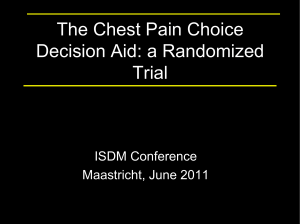

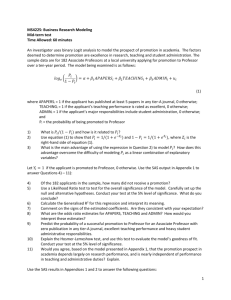
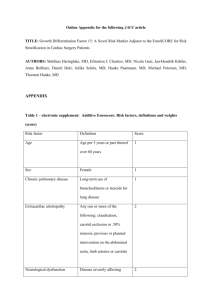
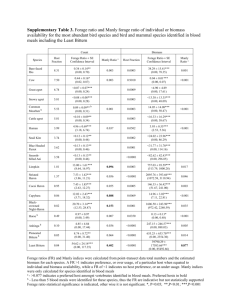

![Blair _Wormer_[NCSC_ACS_2013]](http://s3.studylib.net/store/data/005823715_1-199777ba9a38fe55b0950bba18d591a9-300x300.png)